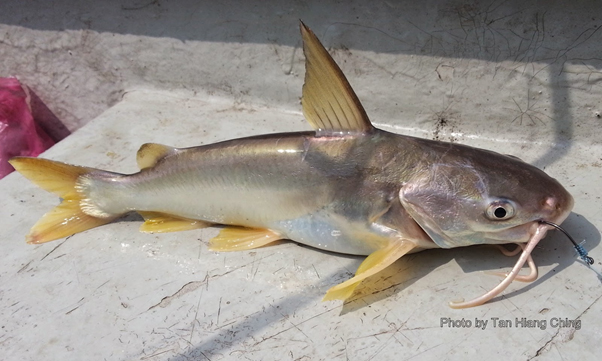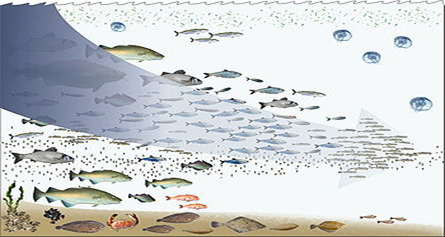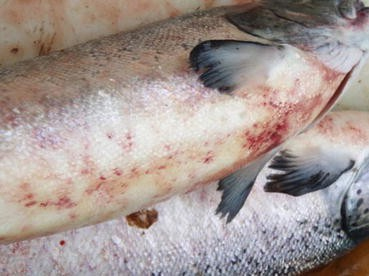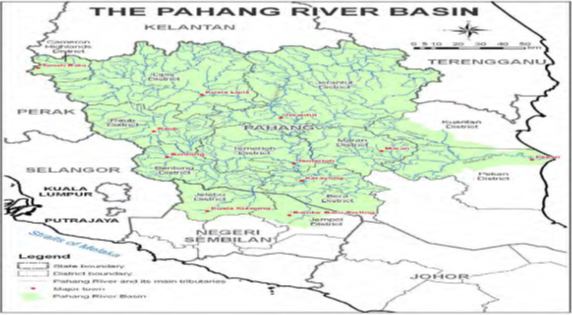Summary Project
SUMMARY
The sea catfish family Ariidae is a natural group defined by four anatomical synapomorphies: lapillus otolith extraordinarily developed, bones of the otic capsules (prootic, pterotic, exoccipital, and epioccipital) profoundly inflated, presence of a welldeveloped ventral process of basioccipital, and male mouthbrooding of eggs and embryos. Recent authors agree that the sister group to ariids is the freshwater family Anchariidae from Madagascar; however, there is no consensus about the phylogenetic relationships of the Ariidae + Anchariidae clade among other siluroid families. The family Ariidae can be divided into two monophyletic lineages. Galeichthyinae, new subfamily, including one genus and four species, is defined by one derived morphological state: postcleithral process fused to the posterior dorsal process of cleithrum, forming a fan-shaped lamina. The subfamily Ariinae, including all remaining ariids, is characterized by four anatomical synapomorphies: posterior process of epioccipital produced and connected to the sustentaculum of Weberian apparatus, ventral process of basioccipital and ventral ossification of complex vertebra forming an aortic tunnel, presence of anterodorsal bony block of the orbitosphenoids, and absence of anterior nuchal plate. Additionally, mitochondrial and nuclear evidence strongly support the monophyly of the Ariidae (three amino acid synapomorphies) and its subfamilies (Galeichthyinae, six amino acid autapomorphies of Galeichthys peruvianus; Ariinae, four amino acid synapomorphies).

SUMMARY
Fish communities often consist of discrete and nonrandom species assemblages. Stream fish communities are all structured none randomly in space. In a meta-community framework, local fish communities may be structured by both spatial and environmental factors. Most fish in small, stable streams are most probably habitat specialists that have evolved various morphological and behavioral adaptations to exploit specific habitat types. Over large geographical and habitat scales, environmental filtering and anthropogenic effects are generally the most important determinants of assemblage variability. Streams are important habitats, providing shelter and feeding opportunities for a wide range of organisms like fish, insects, plants, mollusks, birds and mammals. Fish community structure depends on biotic interactions and abiotic variables. Predation is a major determinant of ecological patterns in fresh water fish communities. Resource partitioning among fishes suggest that competition may play an important role in the local organization of communities. Most studies are based on field observations, and many suggest that niche segregation rather than competitive exclusion is the predominant outcome resulting from competitive interactions. Finally, we saw that, fish community composition was negatively affected by human impact, Climate change, introduction of exotic spices and tourism or sports on streams.

SUMMARY
Pangasius hypophthalmus or famously known by local Malaysians as Patin Hitam is one of the most important sources of food in Malaysia. It is widely cultured in the Peninsular Malaysia especially in Pahang as Patin is a popularly consumed freshwater fish. Global economic interest in the fish has increased its demand in the USA and Europe. However, high mortality due to bacterial and viral infections is the main problem that needs to be solved. Therefore, bacteria in P. hypophthalmus in Pahang is being focused with the factors connected to the prevalence of bacteria and virus in P. hypophthalmus. This research was conducted for two cycles (February–September 2016 and January–August 2017) in different farms in Temerloh and Pekan, Pahang. Bacteria and virus samples were taken from three organs of Patin Hitam which are kidney, liver and spleen. Physical parameters for water quality was measured using a multi-parameter probe sensor (YSI, USA) and chemical parameters were analyzed with DR900 colorimeter (Hach, USA). Bacteria samples were identified using biochemical test kits, API 20NE and 20E, followed by confirmation of the bacteria using Polymerase Chain Reaction (PCR). Virus samples were identified using conventional PCR. There were several bacteria isolated throughout the culture period. The highest prevalence of bacteria found was Aeromonas hydrophila (63%0 followed by Photobacterium damselae (23%), Plesiomonas shigelloids (7%), Pseudomonas luteola (4%) and Pseudomonas fluorescens (3%). There was no virus isolated from these two sites in Pahang River. The susceptible size of Pangasius spp. that was infested by A. hydrophila was 300-400g. Furthermore, risk factors affected the presence of bacteria were different at all sites. However, only ammonia was presence throughout the sampling period at all sites. Sulfide, nitrite, iron and ammonia were were the most significant parameters that have strong associations with the presence of A. hydrophila. Significantly, these results could contribute to better treatment of fish disease and development of standard operating procedure of future fish culture for early disease prevention.

SUMMARY
The Pahang River Basin, which is the largest river basin in Peninsular Malaysia with the catchment area of about 29,000 km3, situated between the Titiwangsa Range in the west and Timur Range in the east. The Titiwangsa Range, which runs north and south like a backbone of Peninsular Malaysia, generally ranges in elevation from 1,000 to 1,500 m with several peak summits reaching about 2,000 m. Timur Range runs north and south along the coastal plain in the east edge of the Basin, ranging generally from 300 to 600 m in elevation with some peak summits reaching about 1,500 m. Additionally, the Gunung Tahan mountain range, which has the highest peak (2,187m) of Peninsular Malaysia, runs south and north in the central northern part of the basin. Multivariate statistical techniques such as cluster analysis (CA), factor analysis (FA) were used for the evaluation of spatial variations and the interpretation of a large complex water quality data set of two selected estuaries of Malaysia. The two locations of interest with 10 sites in each location were Kuala Juru (Juru estuary) and Bukit Tambun (Jejawi estuary). Cluster analysis showed that some sites in both locations have similar sources of pollution from point or non-point sources whereas FA yielded four factors which are responsible for water quality variations explaining more than 80% of the total variance of the data set and allowed to group the selected water quality. Correlation analysis of the data showed that some parameters have strong association with other parameters and they share a common origin source. This study illustrates the usefulness of multivariate statistical analysis for evaluation and interpretation of complex data sets to get better information about the pollution sources/factors and understanding the behavior of the parameters in water quality for effective river water quality management.
